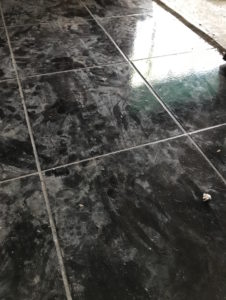After flooding or water damage, it is not always evident whether or not stone surfaces can be restored or if they need to be replaced. Here is a quick guide to help you designate which issues can be addressed through restoration:
Surface dirt, mud, silt
It is hard to evaluate the damage water has had on your stone floor until you give it a good scrub clean first. If your home or building was flooded, clean first with a disinfecting cleaner such as Sani-Tyze.
Loss of shine
When water (and possibly other contaminants) sit on a stone floor for a lengthy period of time, the stone floor isn’t just dirty, the stone has most likely etched and has an overall patchy appearance. At this point, to reestablish a consistent honed or polished appearance to the stone surface, the stone needs to be restored by a professional restoration company such as International Stoneworks.
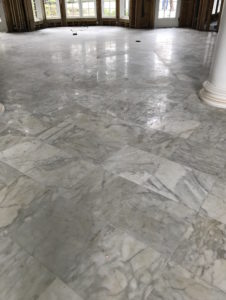
Whether your floor is natural stone such as travertine, marble, limestone or a tiled surface, I highly recommend taking the right steps refinish and restore the surface. Contact us and we can come evaluate what restoration methods work best for your stone or tile surface.
Stains
Stains are tricky and can be hard to evaluate. You don’t know how deep a stain is just by looking at the surface of the stone.
After flooding or water damage, it is common to see darker areas if the stone still has moisture. It can take a month or longer for the stone to completely dry out. If you see darker, moisture stains, keep an eye on them. If after a month, the darkness has not improved at all, you may need to start considering replacement.
However, if after a month, you see that these darker areas have become lighter, your stone may just need more time to dry out.
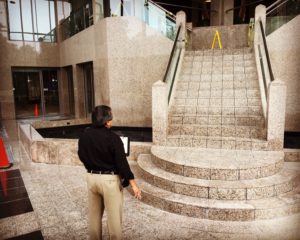
Brown, yellow and other colored stains need to be evaluated on a case by case basis. If you know the source of the stain (example you had metal furniture on your floor and you now see rust stains due to this metal furniture), please mention this important information when speaking with a stone restoration specialist. Certain surface stains can be drawn out using a poultice.
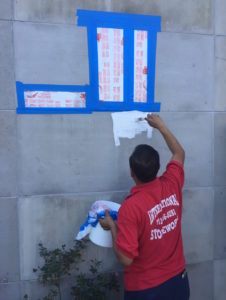
Efflorescence (white calcium deposits)
As your stone or tile surface is drying, you may see a white powder form on the surface. This is a normal part of the drying process. It is called efflorescence.
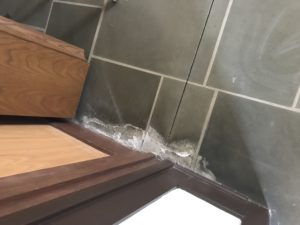
According to the Natural Stone Institute: “Efflorescence is caused by water carrying soluble salts from below the surface of the stone. The salts are deposited and recrystallize upon evaporation of the water, leaving a powdery salt residue. If the installation is new, dust mop or vacuum the powder. Repeat as necessary as the stone dries out. Do not use water to remove the powder. If the problem persists, contact the contractor.”
…and by contractor, that would be us, International Stoneworks. Once the stone floor is as dry as it can get, we can come in and mechanically remove as much residue as possible with a brush. Then clean the area with a mild acid cleaner for slate and granite. For marble (and similar stones such as terrazzo and travertine), we clean with an alkaline stone cleaner, Lavenet.
Newly-formed cracks
After water is removed from the home or building, please evaluate the floor and note if there are new cracks that have formed. Cracks cannot be removed through the restoration process, although certain wider cracks can be filled with an epoxy. However, if you see many cracks, please consult with a structural engineer.

